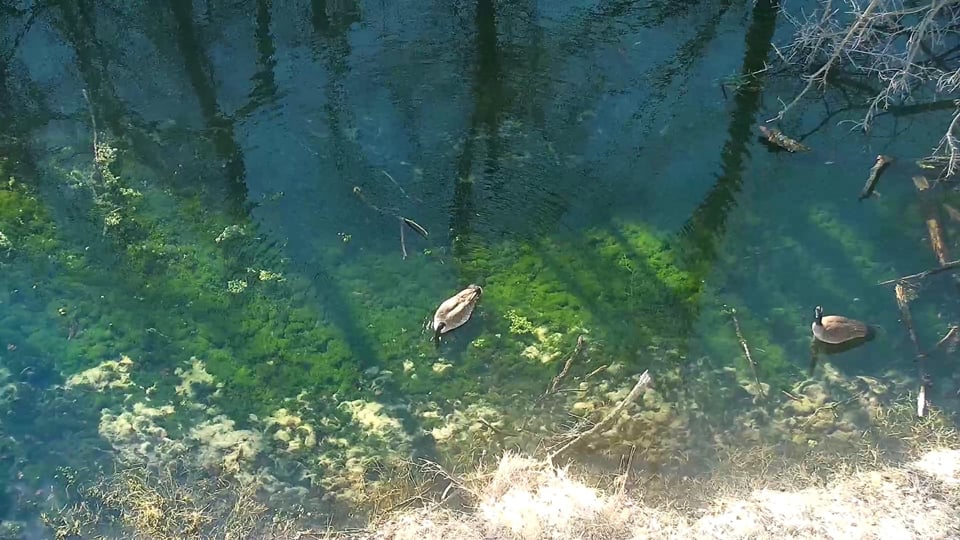
Bald Eagles play an important role in ecosystems. They stand on top of the food chain or web, are generalist hunters who consume and produce carrion, and are a keystone species: a species that is vital to the health of its ecosystem. We know and write about their trophic relationships, but we don’t often consider the importance of their nests to other species. Alternate, abandoned, or in use, large bald eagle nests stand for many years and serve as homes, lunch counters, nurseries, home stores, copulation platforms, perches, and emergency concealment for many other species, including species that sometimes end up on the menu! Let’s take a look at the North Nest neighbors!
Biodiversity hotspots at a small scale: neighbors in and outside the nest!
We’ve been keeping track of the Bald Eagle nest neighbors for years. Some benefit indirectly from the eagles’ presence: animals that feast on prey remains dropped or left on the ground, trees with dead limbs that are slowly pruned by nest-building eagles, and any animal that prefers a slightly more open canopy. Eagles don’t trim trees to the degree that humans might and they aren’t interested in forest management as we understand the concept. But they do like good sight lines and flight lines, and we’ve seen them breaking off limbs to maintain favorite perches, which are often worn and glossy from years of use. Over time, Bald Eagle nesting activities gradually open up the forest canopy.
A reef in a tree!
Other nest neighbors use the nests. We regularly see mice, squirrels, sparrows, and Canada geese at active and alternate/abandoned nests. Depending on the time of year, we might see birds, mice, and squirrels foraging for food and nesting materials or building their own nests inside the tangled web of sticks that form an eagle’s nest, great horned owls using nests as courtship platforms, and a variety of animals seeking emergency shelter from predators more threatening than a bald eagle: a House Wren seeking shelter from a Cooper’s Hawk, for example. Much like a marine reef or dead tree, bald eagle nests aggregate communities looking for food, shelter, mates, and safety.
Who are the people in the neighborhood?
Vertebrate animals we’ve seen using the North, Decorah, and Fort St. Vrain Bald Eagle nests
Nest Use Very Common
- Mice: Nesting, foraging
- Fox Squirrel: Foraging, possibly nesting
- House Sparrow: Foraging, nesting
- Canada Goose: Nesting
Foraging for Food
- Non-territorial Bald Eagles
- Mice
- Red-Bellied Woodpecker
- Fox Squirrel
- White Breasted Nuthatch
- Raccoon: Nest overs, eaglets
- European Starling
- Blue Jay: Frozen Squirrel
- Northern Cardinal
- Downy Woodpecker
- American Crow
- Black-capped Chickadee
- Magpies
- Crows
Foraging for Nest Materials
- Fox Squirrel: Dry corn husks, leaves
- House Sparrow: Fur, grass
- Baltimore Oriole: Baling Twine
Exploration/Perching on Nest
- Red-Tailed Hawk
- Northern Saw Whet Owl
Co-Nesting
- Mouse
- House Sparrow
- Common Grackle
- Fox Squirrel
- Canada Goose
Courtship
Unknown
- House Wren: Concealment/emergency shelter
An entangled bank

As we watch the plant and animal communities near Bald Eagle nests, I can’t help but wonder how their absence was felt and how things will change moving forward. These communities eat one another, recycle nutrients, provide shelter, modify their environments, and create a place to thrive. How did parasites, commensals, and symbionts change when eagles vanished and how will they change again following their return? Will we see more geese nesting in alternate and abandoned nests? How might providing a home for mice – the breadbasket of the forest! – benefit the community as a whole? How does an increase in carrion, whole or otherwise, impact scavengers, detritovores, and plants? Does ongoing pruning of dead or mostly dead limbs help trees and animals that use them for shelter, caching, and nesting?
Every observation yields insights and a thousand more questions that might very well hold keys to their survival and ours as well. The eagles’ world is filled with endless, ever-changing forms, beautiful, profound, and entangled in ways we are only beginning to recognize.
 The Raptor Resource Project
The Raptor Resource Project The Raptor Resource Project
The Raptor Resource Project